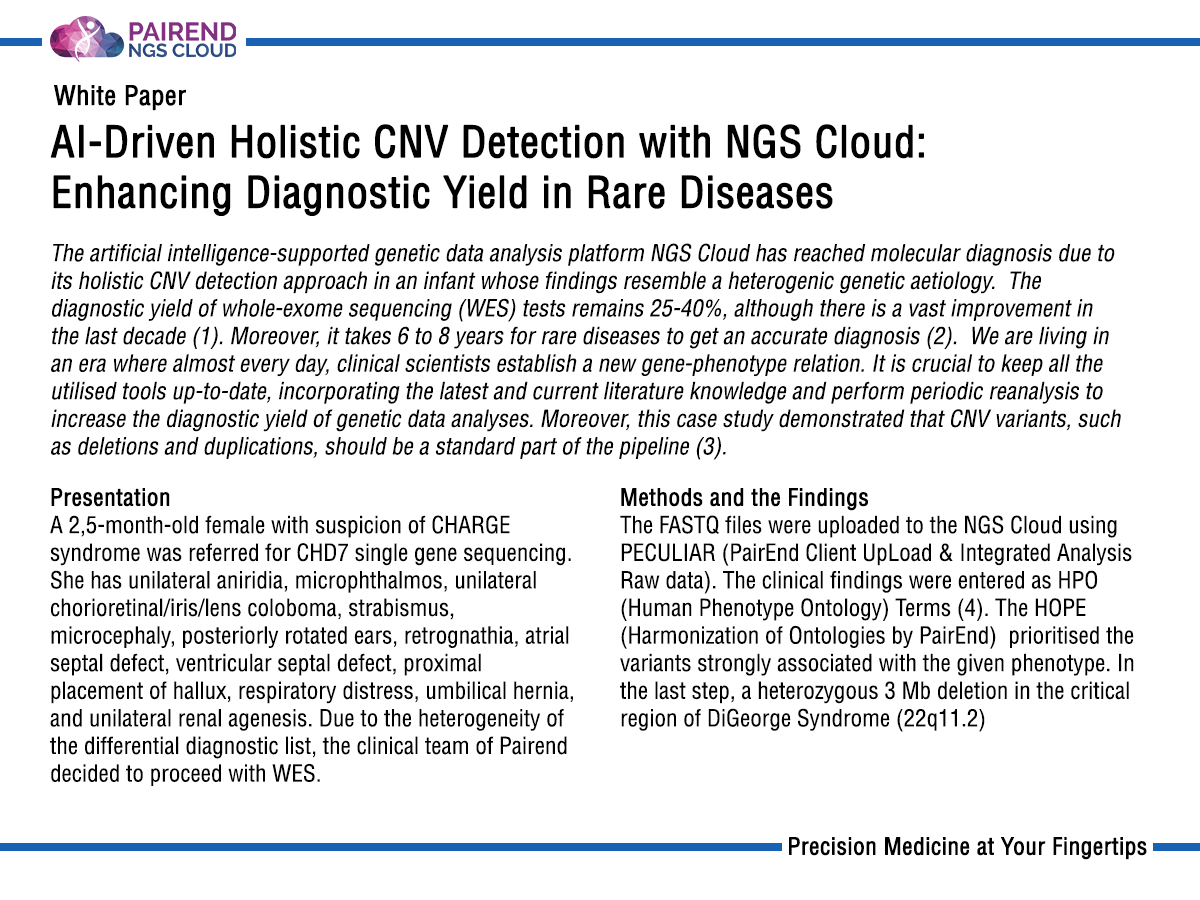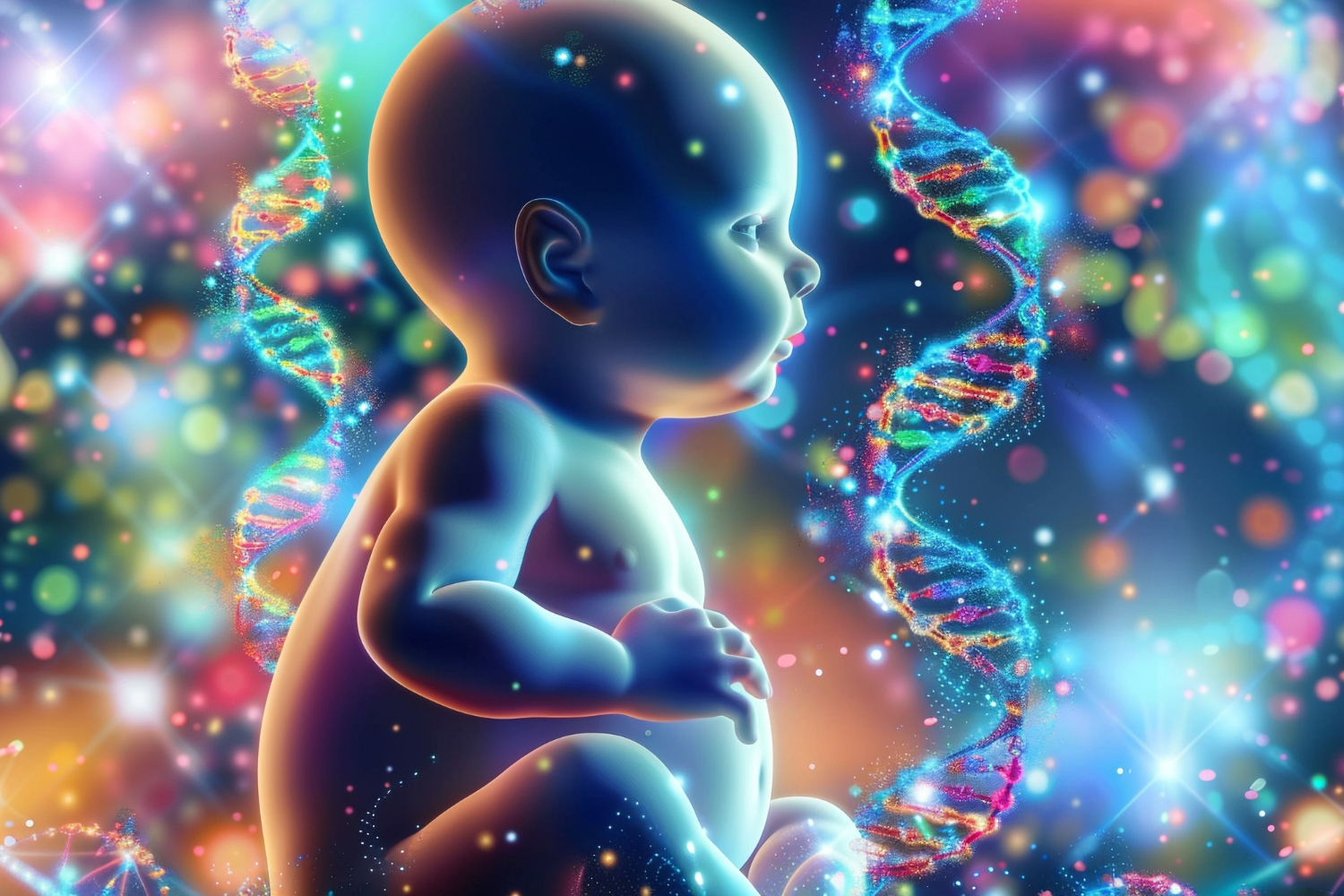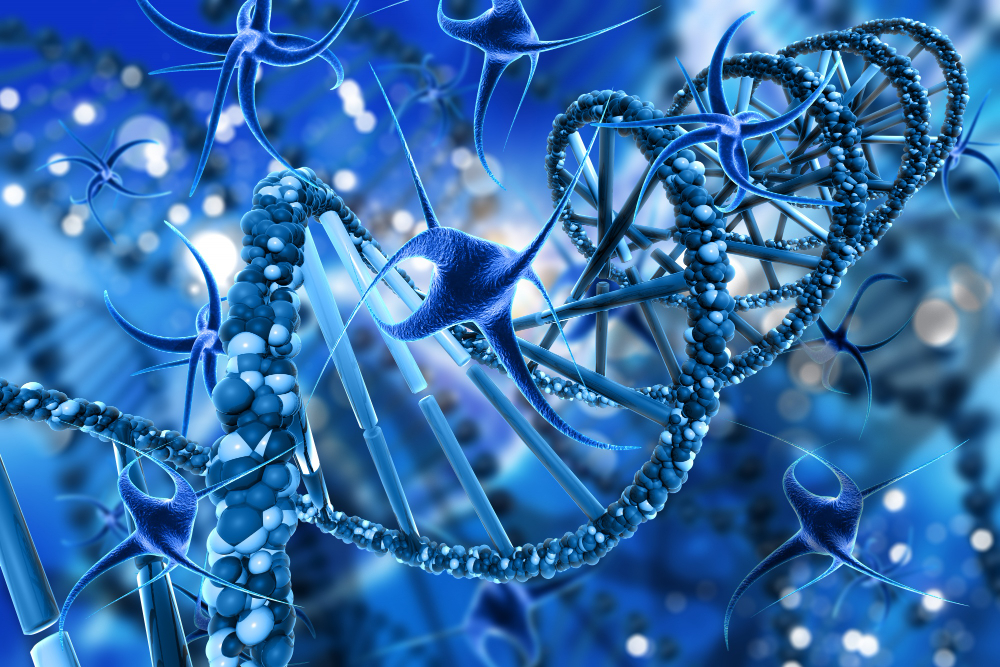
AI-Driven Holistic CNV Detection with NGS Cloud
The artificial intelligence-supported genetic data analysis platform NGS Cloud has reached molecular diagnosis due to its holistic CNV detection approach in an infant whose findings resemble a heterogenic genetic aetiology.
The diagnostic yield of whole exome sequencing (WES) tests remains 25-40%, although there is a vast improvement in the last decade (1). Moreover, it takes 6 to 8 years for rare diseases to get an accurate diagnosis (2).
We are living in an era where almost every day, clinical scientists establish a new gene-phenotype relation. It is crucial to keep all the utilised tools up-to-date, incorporating the latest and current literature knowledge and perform periodic reanalysis to increase the diagnostic yield of genetic data analyses. Moreover, this case study demonstrated that CNV variants, such as deletions and duplications, should be a standard part of the pipeline (3).
Presentation
A 2,5-month-old female with suspicion of CHARGE syndrome was referred for CHD7 single gene sequencing. She has unilateral aniridia, microphthalmos, unilateral chorioretinal/iris/lens coloboma, strabismus, microcephaly, posteriorly rotated ears, retrognathia, atrial septal defect, ventricular septal defect, proximal placement of hallux, respiratory distress, umbilical hernia, and unilateral renal agenesis. Due to the heterogeneity of the differential diagnostic list, the clinical team of Pairend decided to proceed with WES.
Methods and the Findings
The FASTQ files were uploaded to the NGS Cloud using PECULIAR (PairEnd Client UpLoad & Integrated Analysis Raw data). The clinical findings were entered as HPO (Human Phenotype Ontology) Terms (4). The HOPE (Harmonization of Ontologies by PairEnd) prioritised the variants strongly associated with the given phenotype. In the last step, a heterozygous 3 Mb deletion in the critical region of DiGeorge Syndrome (22q11.2) within minutes by the automatic analysis algorithm, GENIUS (GENe Interactions Under Scope).
Conclusion
Currently, up to 60–75% of WES cases remain unsolved after initial analysis, many of which are later diagnosed upon reanalysis (5). To address this gap, NGS Cloud offers a cutting-edge, scalable bioinformatics infrastructure that continuously integrates new genomic data, literature-derived gene-disease associations, and updated variant interpretations through automated mining. By significantly reducing analysis time from hours to minutes, minimizing manual curation, and enhancing accuracy in clinical interpretation, NGS Cloud represents a transformative step in the future of AI-assisted molecular diagnostics.
References
- Trujillano D et al (2017) Eur J Hum Genet. 2017;25(2):176‐182. doi:10.1038/ejhg.2016.146
- https://globalgenes.org/rare-facts (Last Access Date: 24.05.2021)
- Frésard, L et al (2018) Cold Spring Harb Mol Case Stud., 4(6), a003392. https://doi.org/10.1101/mcs.a003392
- Köhler S et al. (2019) Nucleic Acids Res. 2019;47(D1):D1018‐D1027. doi:10.1093/nar/gky1105
- Baker SW et al. (2019) J Mol Diagn. 2019;21(1):38‐48. doi:10.1016/j.jmoldx.2018.07.008



